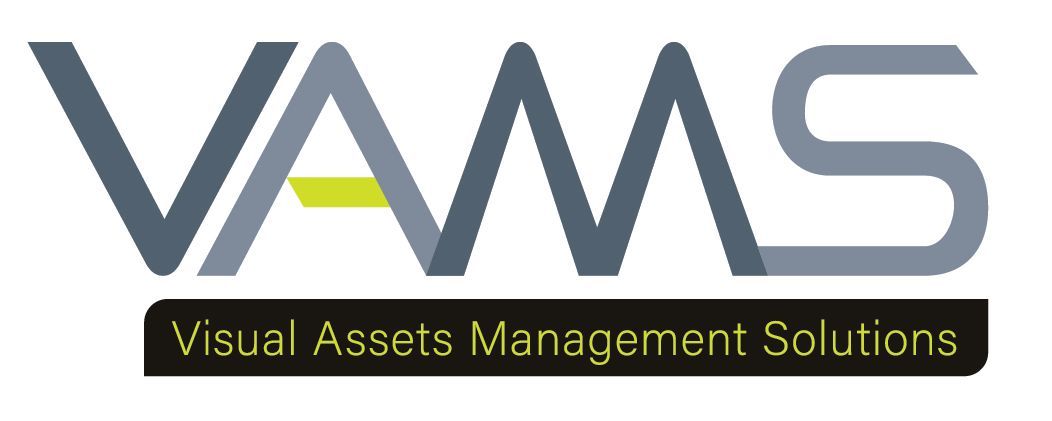Creating an Inviting Online Presence with Quality Hospitality Photography
Creating an Inviting Online Presence with Quality Hospitality Photography

Creating an Inviting Online Presence with Quality Hospitality Photography
In today's digital era, the hospitality industry thrives on a compelling online presence, a
crucial factor in attracting and retaining guests. At the heart of this digital showcase lies the
power of photography – a medium that transcends mere visuals to tell a story, evoke
emotions, and create lasting impressions. The essence of hospitality, with its promise of
comfort and experience, is best captured through meticulously crafted images. This article
delves into the pivotal role of quality hospitality photography, demonstrating its
indispensability in crafting an inviting and appealing online presence that resonates with
potential guests worldwide.
The Power of Visual Storytelling in Hospitality
Visual storytelling in hospitality transcends conventional marketing by weaving a narrative
that captures the essence of a brand's identity and values. This approach harnesses the
emotive power of photography to craft stories that resonate with viewers, turning
prospective guests into loyal patrons.
A prime example is the Ritz-Carlton, known for its opulent settings and exceptional service.
Their photography doesn't just display the hotel; it immerses viewers in the experience,
from the luxurious ambiance to the personalized service, effectively communicating the
brand's dedication to excellence.
Similarly, Airbnb uses photography to showcase unique and authentic experiences,
connecting with travelers seeking more than just accommodation. Their images highlight
diverse locales and personal stories of hosts, aligning with their value of belonging
anywhere. This strategic use of imagery tells a story far beyond the physical space, inviting
guests into a world of unique experiences.
Quality images are a conduit for a brand's narrative, showcasing not just a place but an
experience, an emotion, or a promise. They convey the brand's unique oMerings and values,
creating a connection with the viewer that words alone cannot achieve. In the competitive
landscape of hospitality, where every brand seeks to stand out, visual storytelling through
photography becomes not just an asset, but a necessity.
Essential Types of Hospitality Photography
Interior Photography: Capturing the Essence of Space
Interior photography is fundamental in hospitality, as it showcases the ambiance and
design of a space. Capturing the elegance of a lobby or the coziness of a guest room invites
potential guests to imagine themselves in those spaces. EMective interior shots require
attention to lighting, often using natural light to create a warm and inviting atmosphere.
Composing shots that emphasize space and comfort can significantly impact the viewer's
perception.
Exterior Photography: The First Impression
Exterior shots serve as the first impression, highlighting the architecture and setting of a
hospitality venue. These images should convey the property's grandeur or charm, fitting
seamlessly into its environment. Utilizing the golden hours of dawn or dusk can create
captivating lighting effects, enhancing the structure's features and giving a glimpse of the
locale's character.
Lifestyle Photography: Bringing Experiences to Life
Lifestyle photography in hospitality goes beyond rooms and buildings, capturing moments
and experiences that guests can enjoy. Whether it's a couple dining by candlelight or a
family enjoying the pool, these images should evoke emotions and showcase the
property's vibe. Natural, candid shots often work best, reflecting authenticity and
encouraging viewers to envision their experiences.
Food Photography: A Feast for the Eyes
In the hospitality industry, food photography is not just about capturing dishes but also
about presenting culinary artistry. High-quality images of food can tantalize taste buds and
attract food enthusiasts. Close-ups with good lighting and composition, highlighting
texture and colors, can turn simple dishes into visual masterpieces.
Technical Aspects of Quality Hospitality Photography
Mastering the technical aspects of hospitality photography is pivotal in creating images
that not only capture attention but also accurately represent the essence of the property.
Lighting: The cornerstone of any great photograph, lighting in hospitality
photography must be carefully managed. Natural light brings warmth and
authenticity, ideal for daytime shots. For indoor and evening photography, a mix of
ambient and artificial lighting helps in creating the right mood and texture.
Composition: Effective composition involves thoughtfully arranging elements within
the frame to guide the viewer's eye. Using the rule of thirds, leading lines, and
framing can enhance the visual appeal of a photograph, making spaces look more
inviting and experiences more enticing.
Color Balance: Correct color balance is essential in hospitality photography to
ensure that the images represent the true colors of the space and create a realistic
and inviting atmosphere. Adjusting the white balance according to the lighting
conditions helps in achieving accurate color representation.
Regarding equipment:
Cameras: A DSLR or mirrorless camera with a full-frame sensor is ideal for capturing
high-quality images with greater detail and better performance in various lighting
conditions.
Lenses: A variety of lenses, including wide-angle lenses for spacious interior shots
and telephoto lenses for capturing finer details, are beneficial.
Lighting Equipment: Portable flashes, reflectors, and diffusers help in managing
lighting conditions, especially in indoor settings.
Finally, the importance of post-processing and editing cannot be overstated. This step
polishes the final image, adjusting exposure, colors, and sharpness to produce a polished
and professional look. It's where the photographer's vision truly comes to life, transforming
good photographs into exceptional ones that stand out in the competitive hospitality
market.
Hiring a Professional Photographer vs. DIY
Hiring a Professional Photographer:
Pros:
Expertise and Experience: Professionals bring a wealth of experience,
understanding the nuances of lighting, composition, and storytelling.
High-Quality Equipment: They possess high-end cameras, lenses, and
lighting equipment, crucial for top-notch imagery.
Time Efficiency: With a professional, the process from shooting to editing is
streamlined and efficient.
Cons:
Cost: Professional photography services can be a significant investment.
Availability: Scheduling with sought-after photographers might lead to
delays.
Effectiveness of DIY Photography
DIY Photography can be effective when:
The budget is constrained.
The aim is to capture more candid, spontaneous moments.
The property has unique features best captured by those who know it intimately.
Tips for Working with a Professional Photographer
Communicate Your Vision: Clearly discuss your brand's story, the emotions you
want to evoke, and specific shots you desire.
Plan the Shoot: Coordinate on timing, especially if you want to capture specific
lighting conditions or avoid disrupting guests.
Trust Their Expertise: While it's important to communicate your needs, also be open
to the photographer's creative suggestions for the best results.
Integrating Photography into Your Online Strategy
Integrating photography into your online strategy is a vital step in enhancing your hospitality
brand's digital footprint. The key lies in not just having great photos but using them
effectively across various platforms.
When it comes to websites, high-quality images should be the centerpiece, particularly on
the homepage and gallery sections. They should load quickly and be optimized for all
devices, ensuring a seamless viewing experience. For social media, regularly updating your
feeds with fresh, engaging images helps maintain a dynamic and attractive online
presence, driving engagement and shares.
In online marketing materials like newsletters and digital brochures, use images that
complement and reinforce your textual content, providing a visual break and making the
material more engaging.
SEO optimization of images is crucial for enhancing online visibility. This involves:
Using descriptive, keyword-rich file names.
Implementing alt text for each image, describing its content and context, which aids
in search engine indexing and accessibility.
Ensuring image file sizes are optimized for quick loading without compromising
quality, as page load speed is a factor in search engine rankings.
By thoughtfully integrating photography with your online strategy, you can create a visually
compelling and searchable online presence that resonates with your target audience.
Legal Considerations and Ethics in Hospitality Photography
Copyrights, Image Rights, and Permissions
Navigating the legal landscape is crucial in hospitality photography. Understanding and
respecting copyrights is paramount. This includes:
Obtaining permission for using any branded or copyrighted elements in your images.
Ensuring you have the rights to use and distribute images, especially if they are
sourced from third parties or stock photo sites.
For photographers, it’s essential to have clear agreements with clients about the
usage rights of the photographs.
Ethical Considerations
Ethics play a significant role in how hospitality services and experiences are portrayed.
Photographers should strive to:
Represent the services and facilities accurately, avoiding misleading or false
advertising.
Be mindful of inclusive representation, ensuring that the diversity of guests and staff
is portrayed in a respectful and authentic manner.
Privacy and Cultural Sensitivity
In an industry that caters to a diverse clientele, respecting privacy and cultural sensitivities
is key:
Always obtain consent from individuals before capturing and using their images,
particularly in candid or personal settings.
Be aware of and sensitive to cultural norms and expectations, both in the process of
taking photographs and in their subsequent use.
Measuring the Impact of Photography on Online Presence
Measuring the impact of photography on your online presence is key to understanding its
effectiveness and refining your strategy for maximum engagement. Several tools and
metrics can help in this analysis:
Web analytics tools like Google Analytics oMer insights into how users interact with your
website. Metrics such as page views, bounce rate, and time spent on pages with prominent
photography give an idea of user engagement. Tracking conversions from pages featuring
professional photography versus those without can highlight the impact of quality images
on customer actions.
Social media analytics provide valuable data on how images perform in terms of likes,
shares, comments, and overall reach. Platforms like Instagram and Facebook have built-in
analytics tools that help gauge the effectiveness of different types of images in engaging
your audience.
Gathering feedback directly from your audience can also be insightful. Conducting surveys
or encouraging comments on social media posts can provide qualitative data on how your
imagery is perceived and what resonates most with your audience.
Additionally, A/B testing with diMerent sets of images on your website can reveal
preferences and trends in user behavior, guiding you in fine-tuning your photography
content to better align with your audience's interests and expectations. Regularly reviewing
and analyzing these metrics and feedback will ensure your photography remains a
powerful tool in your online strategy.
Conclusion
Quality hospitality photography is more than just a visual element; it's a storytelling tool
that profoundly impacts your online presence. From mastering technical aspects to
understanding legalities, each facet plays a critical role in captivating your audience. As the
digital age continues to evolve, the importance of visual appeal remains paramount.
Assess and enhance your photography strategies to ensure they not only reflect your
brand's essence but also resonate with your audience's expectations. Embrace the power
of photography to create a truly inviting online presence that stands out in the competitive
hospitality landscape.

